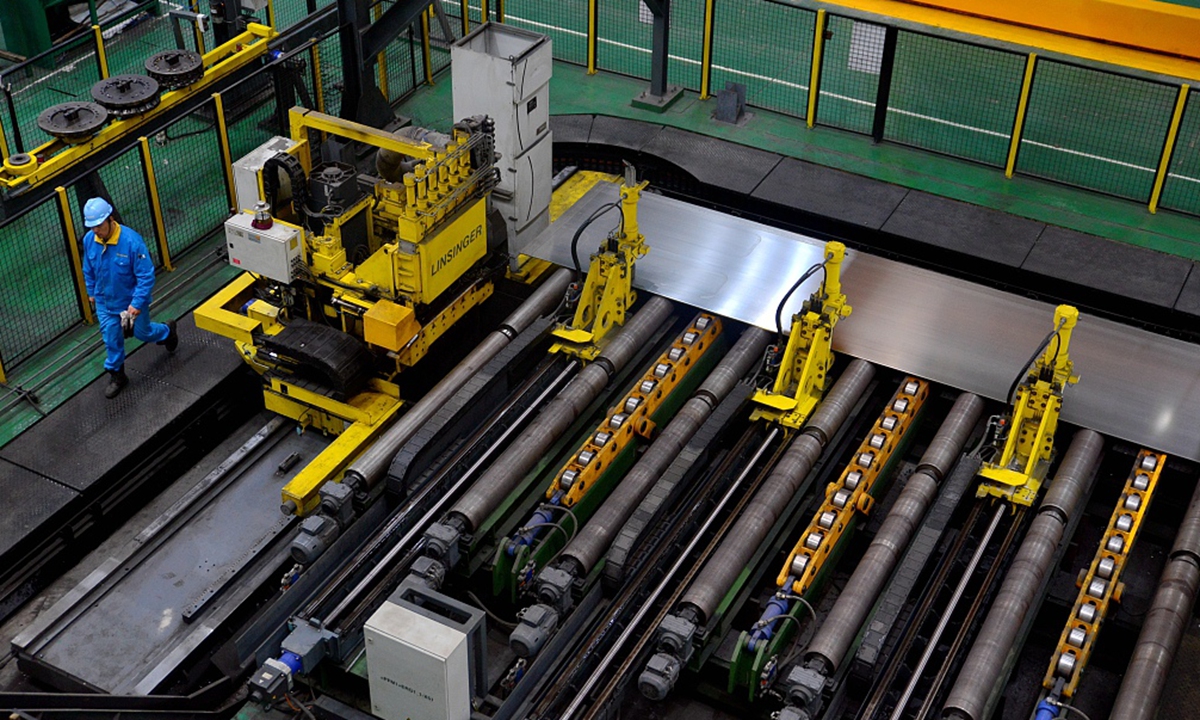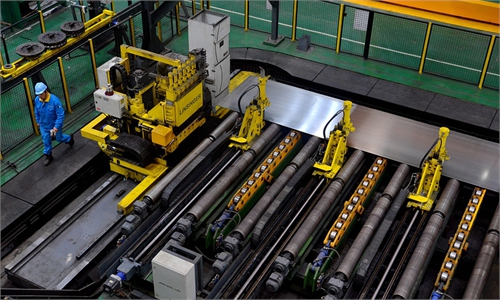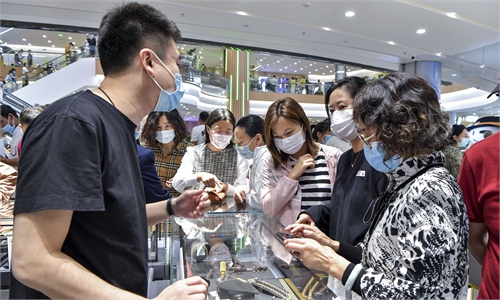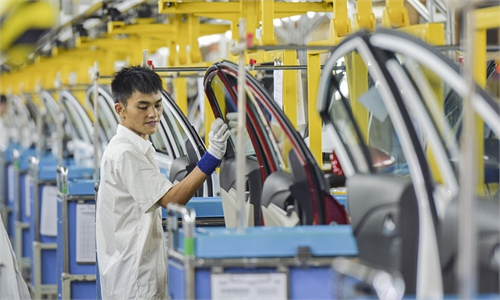
Industry PMI Photo:VCG
As China's official manufacturing Purchasing Managers Index (PMI) and private Caixin manufacturing PMI for January both dropped in January, some analysts said that China's economic rebound may slow in the first quarter due to sporadic COVID-19 outbreaks and strict virus containment measures. A revival of domestic consumption will come in the second and third quarters.
According to figures released on Monday, the Caixin manufacturing PMI remained in expansion territory of 51.5 in January, but it slowed to the lowest ever since July 2020. The national PMI, released by the National Bureau of Statistics on Sunday, stood at 51.3 - the 11th consecutive expansion but the lowest since September 2020.
"The official manufacturing PMI confirms a moderating sequential momentum in the first quarter, partly due to seasonal factors prior to Lunar New Year, in line with our slowing quarter-on-quarter path for first-quarter GDP, though we expect 20 percent year-on-year growth from a low base last year," said Chang Jian, chief China economist at Barclays Plc in Hong Kong, in a report shared with the Global Times.
The slide of the manufacturing PMI in January was within expectations as the country's economic rebound at the end of last year was stronger than anticipated, Tian Yun, vice director of the Beijing Economic Operation Association, told the Global Times.
Predicting China's GDP growth in the first quarter will surpass 13 percent year-on-year, Tian said the true GDP volume will be lower than the last quarter of 2020.
"Orders at our company remain stable and exports of medical equipment are still robust," Chen Lianjie, an executive at Zhejiang Kanglidi Medical Articles Co, told the Global Times, adding there are uncertainties about exports of COVID-19 medical supplies, depending on the resumption of overseas plants.
What makes "the world's factory" different this year is China will operate its most factories during the upcoming Chinese New Year holidays, part of the virus containment efforts to reduce population mobility.
"Before the COVID-19 came, 90 percent of the workers in our factories went back to their hometowns to celebrate the festival with their families, but under the urging of the local government, more than 90 percent of the workers are choosing to stay put," Chen said.
The policy to reduce population mobility will reap benefits for manufacturing sector and exports in the short run if most migrant workers based in export-oriented provinces do not go back home, Tian noted.
The policy may hit many services, which relies on in-person communications, such as tourism and transportation. According to online takeout platform Eleme.com, more than 1,200 restaurants across China have posted recruitment ads on the platform, which have attracted more than 10,000 applicants in the past month.
"These restaurants are concentrated in Beijing, Shanghai, Hanghzhou and Shenzhen. Demand for waiters is the highest among all types of jobs, accounting for nearly 80 percent," Eleme.com told the Global Times, adding that packaging and assistant chefs are also needed.
"Although the policy may constrain consumption in the short run, it will lay a solid foundation for China's consumption revival in the second and third quarters, when workers spend the bonus money they received during the festival," Tian said.
Nomura said in a report sent to the Global Times that although adjusting for some distortions would result in an even lower manufacturing PMI, it can still see the resilience of China's economy to the new wave of COVID-19. The services PMI may dip further in February before bottoming out in March, while the manufacturing PMI could rebound as early as February, it predicted.




